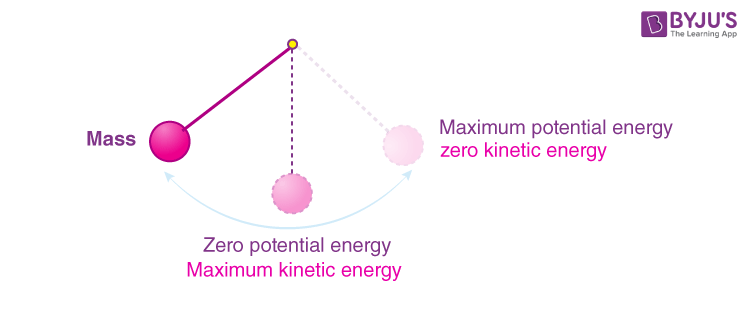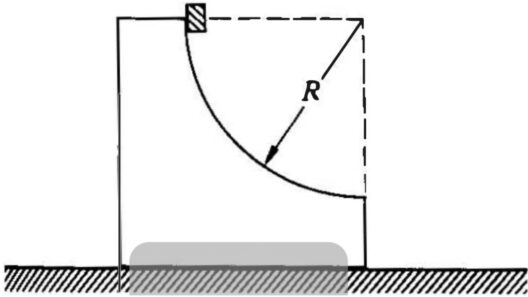In the realm of physics, energy manifests in various forms, with mechanical energy being a prominent and ubiquitous type. It encompasses potential energy, the stored energy of position, and kinetic energy, the energy of motion. A captivating question arises when examining these forms: How can we harness and conserve mechanical energy in our daily lives? This inquiry leads us to the pivotal concept that governs mechanical systems – the Law of Conservation of Mechanical Energy.
At its core, the Law of Conservation of Mechanical Energy posits that the total mechanical energy in an isolated system remains constant as long as external forces do not perform work on the system. When energy transitions between potential and kinetic forms, the sum of these energies stays invariant. This principle is fundamental not only in theoretical physics but also in practical applications, influencing everything from engineering marvels to ecological sustainability practices.
To delve deeper, let us dissect the components of mechanical energy more thoroughly. Potential energy can be quantified by the formula PE = mgh, where ‘m’ represents mass, ‘g’ is the acceleration due to gravity, and ‘h’ indicates height. Conversely, kinetic energy is given by KE = 1/2 mv², with ‘v’ denoting velocity. Together, these equations provide a framework for understanding how energy is conserved in various scenarios.
Consider a simple example: a pendulum swinging back and forth. When the pendulum reaches its highest point, all its energy is potential, held captive by its elevation. As it swings downward, that potential energy is converted into kinetic energy, reaching its maximum velocity at the lowest point of its arc. The subsequent ascent sees kinetic energy morph back into potential as the pendulum climbs again. Throughout this motion, the mechanical energy remains constant, barring external influences such as air resistance and friction.
This principle is not limited to pendulums. It finds relevance in roller coasters, where riders experience breathtaking drops and climbs, continuously converting energy between potential and kinetic forms. The exhilarating thrill of a ride is predicated on the efficient transfer of energy, illustrating how the conservation law operates in everyday life. Yet, one must ponder: as society increasingly seeks energy efficiency, how can these principles of mechanical energy conservation be applied to enhance sustainability?
To tackle this inquiry, it is imperative to consider the design of machinery and transportation systems that maximize energy efficiency. In engineering, mechanisms such as flywheels and regenerative braking systems exploit the Law of Conservation of Mechanical Energy effectively. Flywheels store energy generated from motion and release it upon demand, adding versatility to systems like hybrid vehicles. Regenerative braking, commonly utilized in electric cars, captures the kinetic energy typically lost during braking and converts it back to electrical energy, fostering a more sustainable energy loop.
The manifestations of mechanical energy conservation extend beyond mere transportation. In sports and physical activities, understanding how mechanical energy works can lead to improved techniques and performance. Consider a basketball player jumping to make a slam dunk; the player converts potential energy from the height of the jump into kinetic energy at the apex of the leap. Coaches and athletes who recognize these conversions can apply tailored training regimens that optimize energy conservation during performance, ultimately enhancing athletic prowess.
However, the challenge of conserving mechanical energy does not solely reside in human ingenuity. The natural world offers lessons of its own. Ecosystems operate on a principle of energy conversion – plants convert solar energy into chemical energy through photosynthesis, which supports a web of life relying on energy transfer. For instance, a deer bounding through a meadow converts stored energy from food into kinetic energy, further emphasizing the cyclical nature of energy at play. Here, one must ask: how can human civilization learn from these natural systems to cultivate a more energy-conscious society?
Moreover, as environmental concerns escalate, the accountability of industries that rely heavily on mechanical energy cannot be overlooked. The manufacturing sector, for instance, produces a significant amount of waste energy, contributing to resource depletion and pollution. By implementing strategies like energy recovery systems and optimizing the efficiency of machines, companies can align their operations with the principles of energy conservation. Society at large must advocate for sustainable practices that minimize wasted energy and promote the stewardship of our planet’s finite resources.
Awareness and education play crucial roles in this pursuit. By understanding the fundamentals of mechanical energy and its conservation, individuals can become proactive stewards of energy conservation in their daily lives. Simple actions, such as turning off appliances when not in use, using public transportation, or participating in community initiatives for energy conservation, embody the spirit of this principle. Likewise, fostering an inquisitive mindset about energy usage can lead to innovation and sustainable solutions.
In conclusion, the Law of Conservation of Mechanical Energy encapsulates an essential paradigm that influences both the natural world and human invention. By embracing this principle, we can reconsider our practices, from engineering marvels to daily habits, ultimately striving for a harmonious coexistence with our planet. As we pose the question of how we might effectively harness and conserve mechanical energy, we embark on a necessary journey: one that merges knowledge, engineering, and ecological mindfulness into a cohesive approach toward sustainability. Let us not only appreciate the marvels of mechanical energy but also take action in our commitment to conserve it for generations to come.








